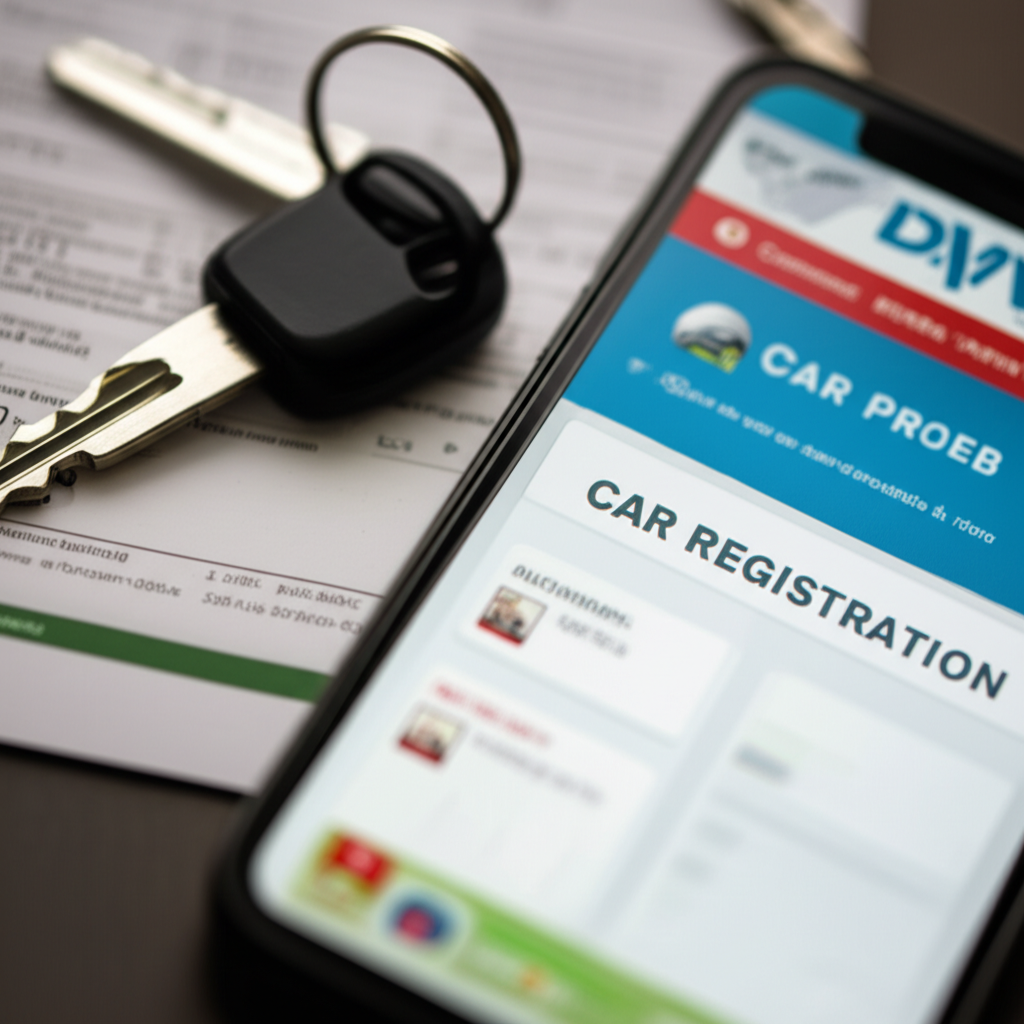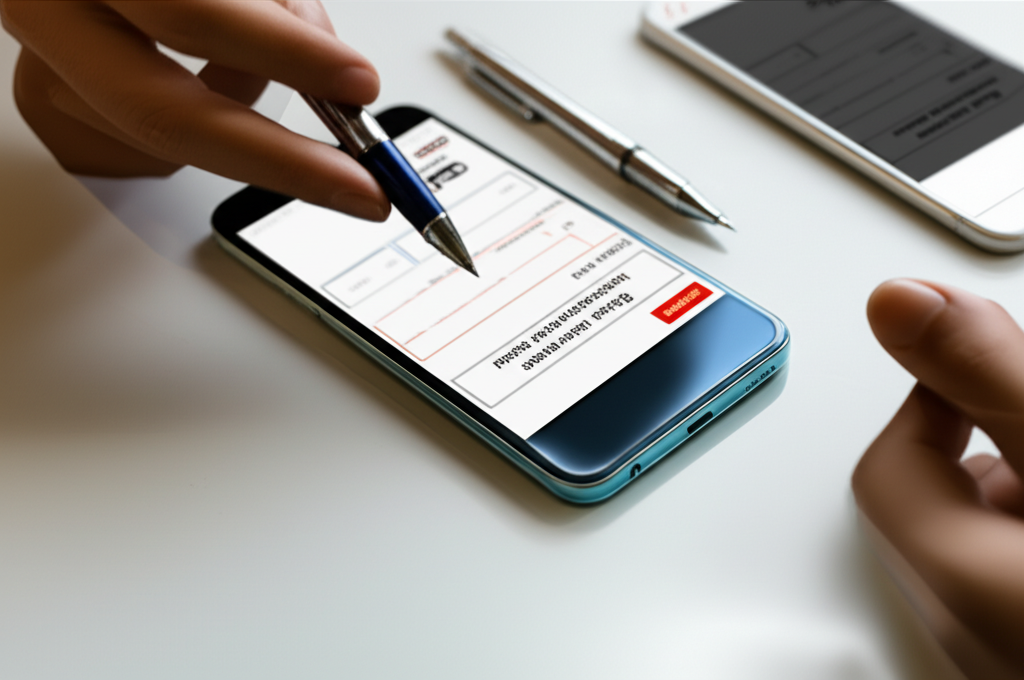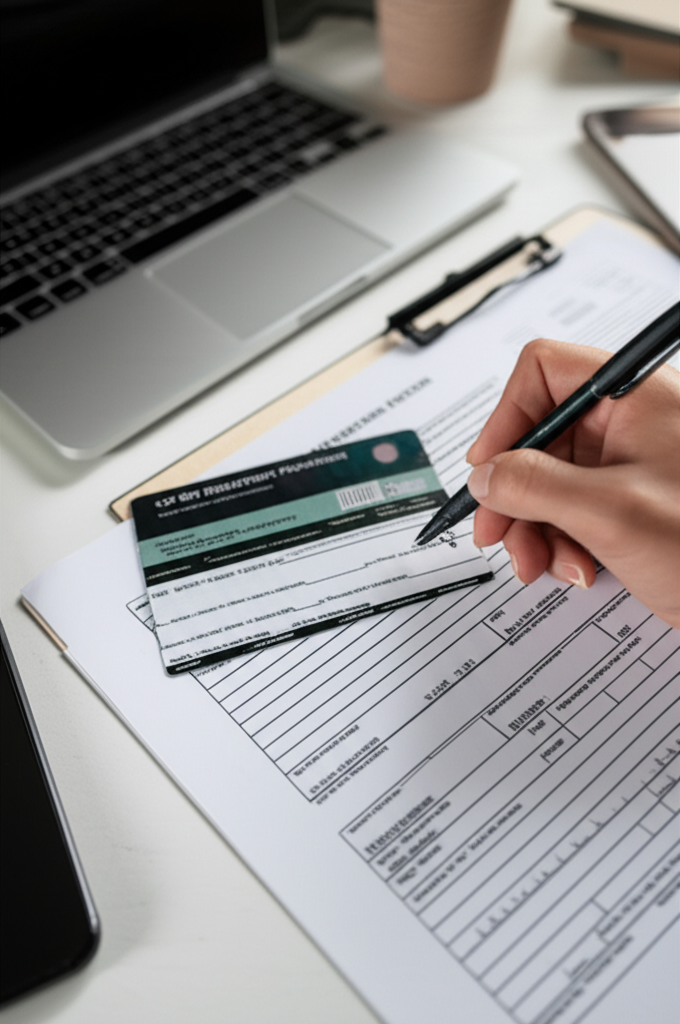How to Renew Car Registration: Essential Guide

How to Renew Car Registration: Your Essential Guide
Renewing your car registration can feel like a chore, but it doesn’t have to be! This guide breaks down the process into simple, actionable steps, helping you understand what you need, where to go, and how to get it done smoothly. You’ll be back on the road legally in no time.
Hey there, fellow travelers and homebodies! Amira here from uaestayinn. I know that sometimes, adulting just feels like a series of administrative hurdles, and renewing your car registration can definitely fall into that category. It’s one of those things that pops up every year (or every couple of years, depending on where you live), and if you’re not prepared, it can lead to a little bit of stress. But don’t worry! Think of me as your friendly guide, here to make this process as clear and painless as possible. We’ll walk through everything you need to know, step-by-step, so you can handle it with confidence. Ready to get started?
Why Renewing Your Car Registration Matters

Keeping your car registration up-to-date is more than just a bureaucratic requirement; it’s essential for legal driving and your peace of mind. Driving with an expired registration can lead to hefty fines, points on your license, and even your vehicle being impounded. Beyond the legalities, it ensures your vehicle information is current with the state, which is crucial for various reasons, including insurance and identification.
Understanding Your Car Registration Renewal

Most states require you to renew your vehicle registration periodically, typically annually or biennially (every two years). This process usually involves paying a fee and ensuring your vehicle meets certain requirements, like passing an emissions or safety inspection. The specifics can vary significantly from state to state, but the core purpose remains the same: to keep official records current and ensure vehicles on the road are safe and legally compliant.
Step-by-Step: How to Renew Car Registration

Let’s break down the entire process into manageable steps. While the exact requirements might differ based on your location, these core steps will guide you through renewing your car registration.
Step 1: Gather Your Essential Documents and Information
Before you even think about starting the renewal process, it’s wise to gather everything you’ll need. This proactive step can save you a lot of time and potential frustration.
- Current Registration Card: This is your proof of current registration and often contains important details like your license plate number, VIN, and renewal notice number.
- Proof of Insurance: Most states require current auto insurance coverage. Have your insurance card or policy declaration page handy. Ensure your policy meets your state’s minimum liability requirements.
- Driver’s License or State ID: You’ll likely need to verify your identity.
- Emissions or Safety Inspection Certificate (if applicable): Some states require your vehicle to pass an inspection before you can renew. Make sure you have the passing certificate.
- Renewal Notice: You usually receive a renewal notice in the mail from your state’s Department of Motor Vehicles (DMV) or equivalent agency. This notice often includes a PIN or reference number that simplifies the online or mail-in renewal process. If you didn’t receive one, you can usually still renew using your license plate number and VIN.
- Payment: Be ready with your preferred payment method. Most agencies accept checks, money orders, and major credit/debit cards.
Step 2: Check Your Vehicle’s Inspection Requirements
This is a crucial step that can sometimes catch people off guard. Many states require vehicles to pass a safety inspection, an emissions test, or both, before their registration can be renewed. These inspections are designed to ensure your vehicle is safe for the road and isn’t contributing excessively to air pollution.
- Emissions Testing: If your state has emissions testing, find an authorized testing station. You’ll typically need to take your vehicle there to get it tested. If it fails, you’ll need to get the necessary repairs done and retest.
- Safety Inspections: Some states require a general safety inspection to check critical components like brakes, tires, lights, and wipers.
Tip: Check your state’s DMV website well in advance of your renewal date to understand these requirements. It’s better to know if you need an inspection a month before your registration expires rather than a week before!
You can usually find a list of authorized inspection stations on your state’s DMV or environmental agency website.
Step 3: Choose Your Renewal Method
Fortunately, most states offer multiple convenient ways to renew your car registration. This flexibility allows you to choose the method that best suits your lifestyle.
Option A: Online Renewal (Most Common and Convenient)
This is overwhelmingly the easiest and fastest way to renew. Most states have robust online portals for their DMVs.
- Visit Your State’s DMV Website: Search for your state’s Department of Motor Vehicles (or equivalent, such as BMV, RMV, MVD) online. Look for a section on “Vehicle Registration Renewal” or “Online Services.”
- Enter Your Information: You’ll typically need your license plate number, VIN, and possibly a renewal notice PIN.
- Complete the Application: Follow the prompts to confirm your vehicle details and personal information.
- Pay Fees: Enter your payment information. You’ll see a breakdown of the renewal fees.
- Confirmation: You’ll usually receive an immediate confirmation page, and your new registration sticker or card will be mailed to you within a few business days. Some states allow you to print a temporary registration.
External Link: To find your specific state’s DMV website, you can often start with USA.gov’s State Motor Vehicle Services page.
Option B: Mail-In Renewal
If you prefer a paper-based process or don’t have easy internet access, mail-in renewal is a viable option.
- Fill Out the Renewal Notice: Your official renewal notice usually includes a form that you can fill out and mail back.
- Include Payment: Send a check or money order for the correct amount. Do not send cash.
- Mail Promptly: Send your renewal form and payment to the address specified on the notice. Allow ample time for processing and mailing, especially if your expiration date is approaching.
Note: Keep a copy of your check or money order for your records.
Option C: In-Person Renewal
Sometimes, you just need to talk to someone or prefer to handle it face-to-face. Visiting a local DMV office is also an option.
- Find Your Nearest Office: Check your state’s DMV website for office locations and hours.
- Bring All Required Documents: Make sure you have everything listed in Step 1.
- Be Prepared for Wait Times: DMV offices can be busy, so factor in potential waiting periods. Some states offer appointment systems to reduce wait times.
Step 4: Pay the Renewal Fees
The cost of renewing your car registration varies widely based on your state, vehicle type, age, and sometimes even your county. These fees typically go towards road maintenance, public transportation, and other infrastructure projects.
Fees can include:
- Base registration fee
- Ad valorem tax (based on vehicle value)
- Plate fees
- County or local fees
- Inspection fees (if applicable)
Tip: Your renewal notice will usually detail all the fees you need to pay. If renewing online, the system will calculate the total for you. If renewing by mail or in person, double-check the amount or ask a representative.
Step 5: Receive Your New Registration and Sticker
Once your renewal is processed and payment is confirmed, you’ll receive your updated registration materials.
- Registration Card: This is the official document proving your car is currently registered. Keep it in your vehicle, typically with your insurance card.
- License Plate Sticker: In many states, you’ll receive a new sticker to affix to your license plate, indicating the expiration month and year. Make sure to remove the old sticker before applying the new one.
Important: If you haven’t received your new registration or sticker within the expected timeframe, contact your state’s DMV immediately. It’s illegal to drive with an expired registration, even if you’ve submitted the renewal.
Common Issues and How to Avoid Them
Even with the best intentions, sometimes things don’t go perfectly. Here are a few common issues and how to keep them from derailing your renewal process.
Issue: Missed Renewal Deadline
How to Avoid: Mark your calendar! Set reminders a month or two before your expiration date. Many states also offer email or text reminders, which you can usually sign up for on their DMV website.
Issue: Vehicle Fails Inspection
How to Avoid: Before your renewal is due, do a quick self-check. Are your lights working? Are your tires properly inflated and not excessively worn? Are your wipers in good condition? If you suspect issues, address them proactively by taking your car to your trusted mechanic. This gives you time for repairs and a re-test if needed.
Issue: Lost Renewal Notice
How to Avoid: Don’t panic! Most states allow you to access your renewal information online using your license plate number and VIN. You can also contact your DMV by phone or visit an office to get the necessary details.
Issue: Incorrect Information on Renewal Notice
How to Avoid: Carefully review your renewal notice as soon as you receive it. If there are errors in your name, address, vehicle information, or plate number, contact your DMV immediately to get it corrected before you submit your renewal.
Issue: Payment Declined
How to Avoid: Ensure you have sufficient funds in your account or that your credit card is valid and has available credit. If paying by check, double-check the amount and ensure it’s signed correctly.
Key Differences by State
It’s vital to remember that every state operates a little differently. Here’s a quick look at some common variations you might encounter:
| Feature | Common Variations | What to Do |
|---|---|---|
| Renewal Frequency | Annual, Biennial (every 2 years), or longer for certain vehicle types. | Check your current registration card or your state’s DMV website. |
| Inspection Requirements | Emissions testing, safety inspections, or no inspections required. Some states exempt newer vehicles. | Consult your state’s DMV or environmental agency website. |
| Fees | Vary significantly based on vehicle age, value, type, and location. Some states have flat fees, others are tiered. | Your renewal notice will detail specific fees. Online portals calculate the exact amount. |
| Renewal Methods | Online, mail, in-person, kiosk, or even mobile app in some progressive states. | Your state’s DMV website is the best resource for available options. |
| Grace Period | Some states offer a short grace period after expiration; others do not. | Do not rely on grace periods. Renew on time to avoid penalties. |
Frequently Asked Questions (FAQ)
Q1: How do I know when my car registration expires?
Your expiration date is usually printed on your current registration card and your renewal notice. Most states also display the month and year on the license plate sticker.
Q2: What happens if I miss the deadline to renew my car registration?
Driving with an expired registration can result in fines and penalties. In some cases, your vehicle could be impounded. It’s best to renew as soon as possible, even if you’ve missed the deadline. Contact your state’s DMV for guidance on late renewals and any associated fees or reinstatement requirements.
Q3: Can I renew my car registration in person if I lost my renewal notice?
Yes, absolutely! You can usually visit a local DMV office with your driver’s license, proof of insurance, and vehicle information (like your license plate number and VIN). They can look up your record and help you process the renewal there.
Q4: Do I need to get an inspection every time I renew my registration?
Not necessarily. This depends entirely on your state and sometimes your vehicle’s age or county. Some states require annual inspections, others every two years, and some don’t require them at all. Always check your local DMV or environmental agency’s guidelines.
Q5: How long does it take to receive my new registration sticker and card in the mail?
Processing and mailing times can vary. Typically, you can expect to receive your new registration materials within 1-3 weeks. If you haven’t received them after that period, it’s a good idea to follow up with your state’s DMV.
Q6: Can I renew my registration for someone else?
Generally, yes, especially if you have all their necessary information (license plate, VIN, proof of insurance) and payment. However, some states might have specific rules or require a power of attorney for certain transactions, particularly if you’re not a co-owner of the vehicle. It’s safest to have all the required documents and information readily available.
Final Thoughts for a Smooth Renewal
Renewing your car registration doesn’t have to be a stressful event. By staying organized, understanding your state’s specific requirements, and utilizing the convenient renewal options available, you can easily keep your vehicle legally compliant. Remember to mark your calendar, gather your documents in advance, and choose the renewal method that works best for you. A little preparation goes a long way in ensuring you stay on the road safely and without any unnecessary hassle. Happy driving!

